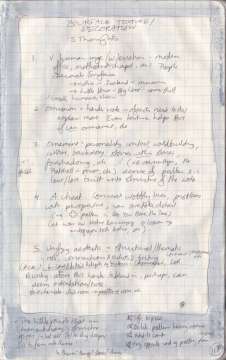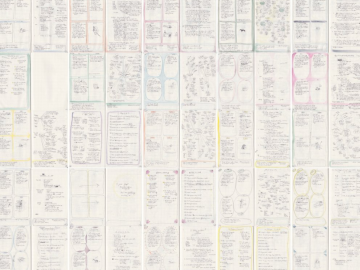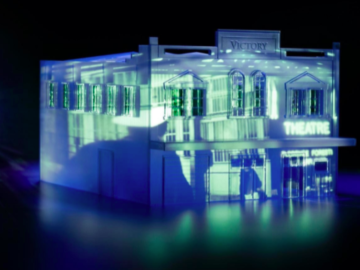Observation Journal: Variations on descriptions
Kathleen Jennings
This observation journal page has what is now one of my favourite observation journal activities. It’s a chance to be poetic and/or silly, a splendid vocabulary workout, and also intellectually soothing enough to do late at night.
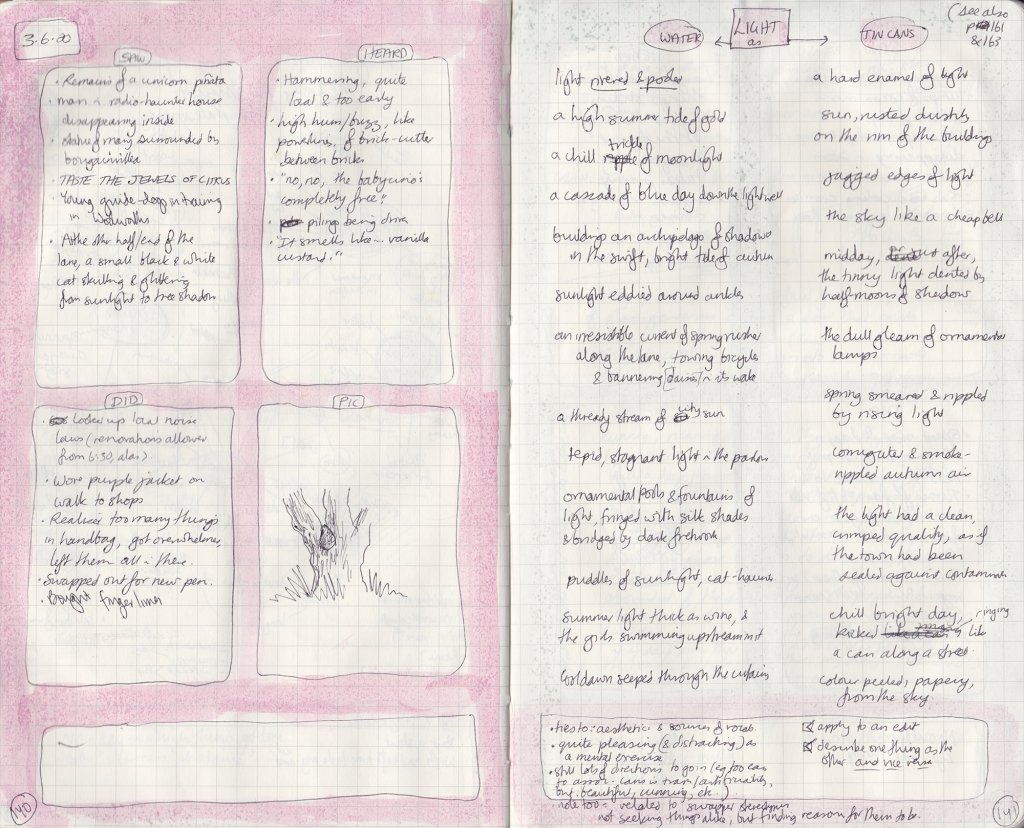
Unicorn piñatas and bougainvillea-shrouded statues, glittering cats, finger limes, and a rock grown into the fork of a tree.
The basic idea is to pick (at least) three nouns. One noun is “it”. Next, describe that noun using descriptions more commonly used for (or words more commonly associated with) each of the other nouns. I try to get at least 10 descriptions for each of those two reference words.
So on this page, I wanted to write some descriptions of light. But I keyed the descriptions to the way I might ordinarily describe (a) water and (b) tin cans.
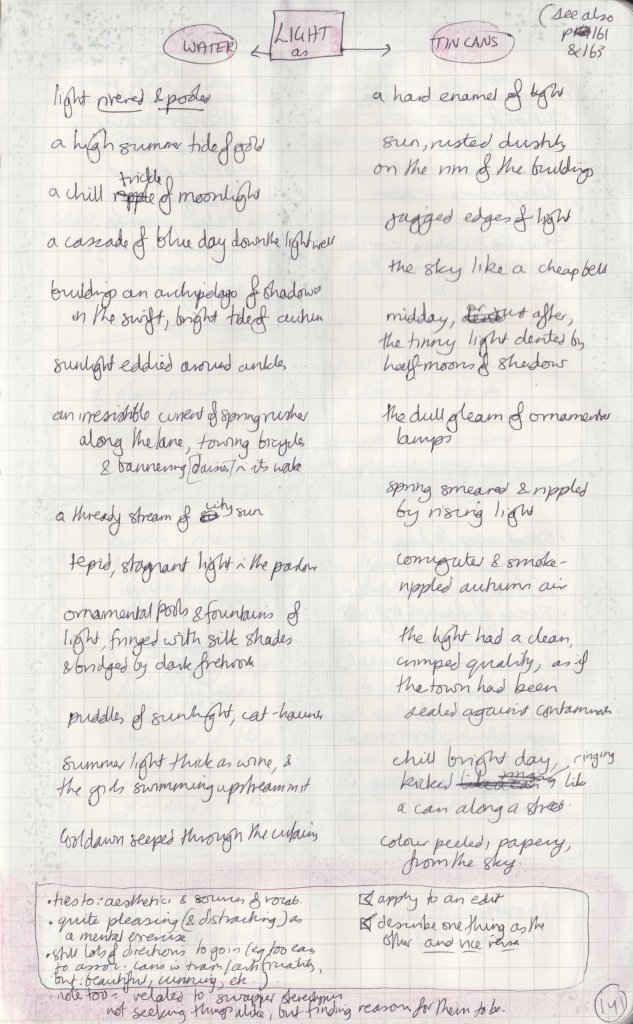
So, for example, describing light using terms I associate with water, I get:
light rivered and pooled
sunlight that eddies around your ankles
buildings an archipelago of shadows in the swift, bright tide of autumn
tepid, stagnant light in the parlour
a chill trickle of moonlight
And for “tin cans” there is:
a hard enamel of light
jagged edges of light
corrugated and smoke-rippled autumn air
the light had a clean, crimped quality, as if the town had been sealed against contamination
a chill bright day kicked ringing like a can along the street
It is a thoroughly enjoyable exercise, but also surprising. It pulls out unexpected metaphors and similes, it forces me to look with new eyes at the reference terms (how many thoughts do I associate with tin cans?). It tunes aesthetics (industrial beauty? aquatic moods?) and begins to build little worlds (how does light work in this place, and how do people interact with it?). And changing my perspective on the first term (light) in two different directions sets up echoes and comparisons and resonances.
Related posts and writing:
For unexpected descriptions and going against the obvious, see: The Caudwell Manoeuvre
See also the observation journal posts on aesthetics generally.
And my short Australian Gothic novel Flyaway (very descriptive) and chapbook Travelogues: Vignettes from Trains in Motion (a written sketchbook)
Writing/art exercise
Pick three nouns at random — common ones you can see around you, or try a random word generator.
The first noun is the one you will have to describe (or illustrate).
But first, look at the other two nouns. Think of their characteristics, and things you associate with them. It could be words or cliches, myths and moods. Or it could be shapes, textures, colours, weight and movement.
Now look back at your first noun:
Writers: Make a list of descriptions, metaphors, similes, etc describing the first noun, but using those associations from the other ones. (I like to try to do 10 descriptions for each of the reference nouns).
Illustrators: Try to draw the first noun using the (textures, colours, associations etc) of the reference nouns (one at a time).
(NB. If you’re using more conceptual nouns, you might have to get particularly creative — but feel free to limit yourself to visible, concrete nouns. Drawing a fox using textures (for example) more associated with a staircase and velvet is a rather different artistic proposition to illustrating the idea of a program using imagery you associate more with hope and intellect — although both are quite possible.)
Take a step back and notice how the activity went. Where were the surprising resonances, the difficult mismatches, the things you began to notice about any of the nouns? Where did you push against your default settings? How are the two different directions different, and what did they reveal about the core idea with which you began?
